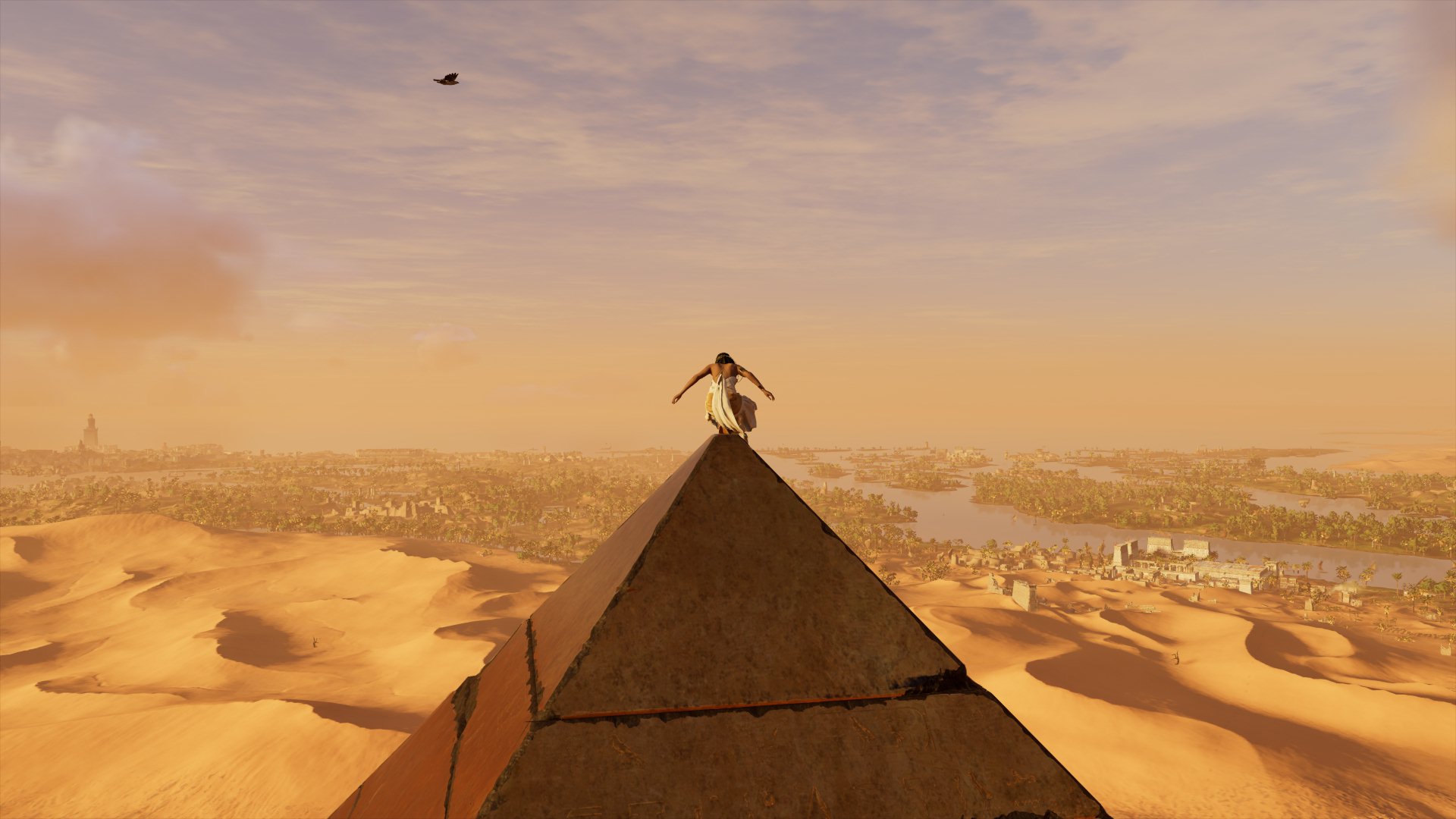My favourite thing about playing Assassin’s Creed: Origins wasn’t the ability to leap off of rooftops, violent fighting scenes inside the Great Pyramids, or looting armed fortresses. Sure, those parts were entertaining – but what I valued most about this game were the details; hearing snippets of languages, watching birds and animals move around the desert, and watching prayer rituals were some elements that made for a much more immersive and interesting play. Apart from stimulating my curiosity to know more about how ancient Egypt can be experienced through the game, its landscape was also very aesthetically pleasing. But how much is fact, and what parts of this culture were fictionalized to suit the needs of the game?
At a digital conference last month I had the pleasure of listening to Maxime Durand, historian and lead world-designer of Assassin’s Creed, talk about how world cultures and histories influence fictional recreations of historic landscapes in the game. As a fan of both history and historically-set games, this seemed like the perfect opportunity to explore if and how video games like Assassin’s Creed, which are fictionalized stories set within historical time periods, stimulate or result in any history or cultural learning. So I went ahead and bought UBISOFT’s Assassin’s Creed: Origins, chose ancient Egypt to explore, and honestly I haven’t stopped playing it since.
In this article, I will try and answer three questions that stood out to me during my preliminary research on gaming and history learning in AC. These exploratory questions were analysed from both game-play and campaign stories as is the normal format with Assassin’s Creed games, as well as a special downloadable addition to the game, the Discovery Tour, which provided educational content for those interested in learning more about ancient Egypt. Firstly, how much of the landscape, architecture, language and other historical elements portrayed in AC are factually based? Secondly, I wanted to analyze how accurately these historical elements were portrayed during the game, and that included witnessing or experiencing daily life in ancient Egypt, from trading and markets to food and lifestyles as my in-game avatar, Bayek. Thirdly, I wanted to examine how much cultural and history learning actually took place during the game, specifically while playing in the Discovery Tour mode.
Separating fact and fiction
One of the first things Durand addressed during the conference was the issue of representing distances in ancient Egypt. If you compare an actual map of ancient Egypt and the map as represented in the game, you’ll notice that geographical distances in the game map have been condensed to fit a game format, allowing for the player to move from region to region with ease. Elements like this manipulated topography, as Durand said, have been selected from factual history and manipulated for the purpose of the game. Assassin’s Creed’s tagline, “Make history everyone’s playground” is sometimes taken too seriously by the game developers – of course in this case we have to take it at face value: it is a game, not a history lesson.
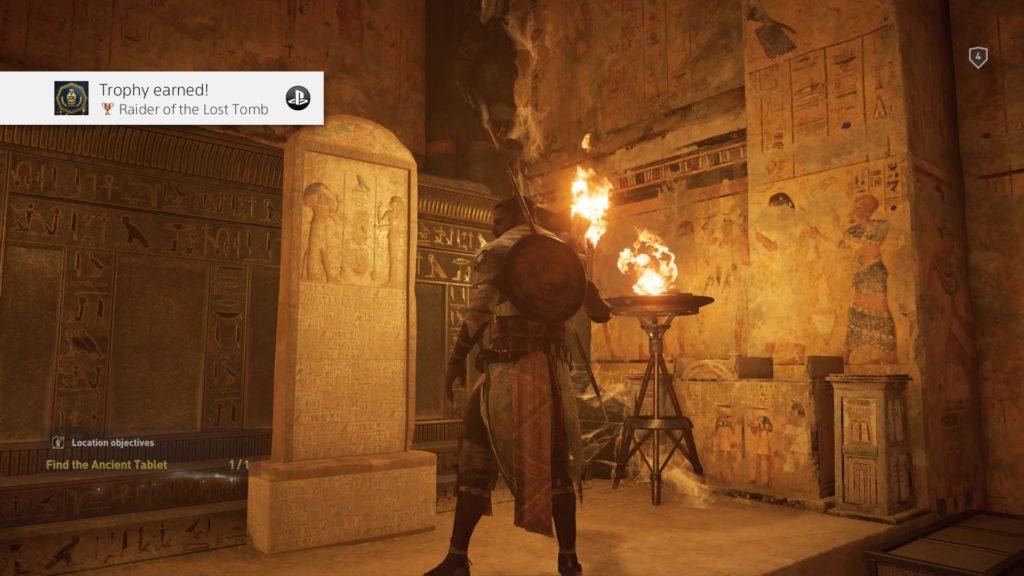
But that doesn’t mean that some history learning can’t take place while you play, especially considering the quality and effort of historical research that goes into creating such a vast world. In fact, as the disclaimer says on the start screen, the game has been researched and developed by a large group of historians and experts, a level of expertise that is evident whether you embark on campaigns as the protagonist Bayek or explore temples in Memphis as Aya, an assassin from Alexandria in the Discovery Tour.
So how did the researchers and game designers strike a balance between fact and fiction? An article by Jonathan Ore (2017, see link below) interviews one of the experts behind the game design, Evelyne Farron, on the challenges of building a virtual ancient Egypt. A teacher of ancient history in Canada, Farron spent four years consulting with Ubisoft on the game, a task that included giving seminars to developers on ancient Egyptian traditions and lifestyle around the time of Cleopatra’s reign, which is the time period the game is set in.
“What were the environment, the climate, the animals like? What was the lifestyle? What was the difference between the Greek and Egyptian cities and the countryside? What did the farming look like? What were the trade routes and roads across the desert, as an example? So it was a really big picture,”
Evelyne Farron, How historians helped recreate ancient Egypt in Assassin’s Creed: Origins, Jonathan Ore, 2017.
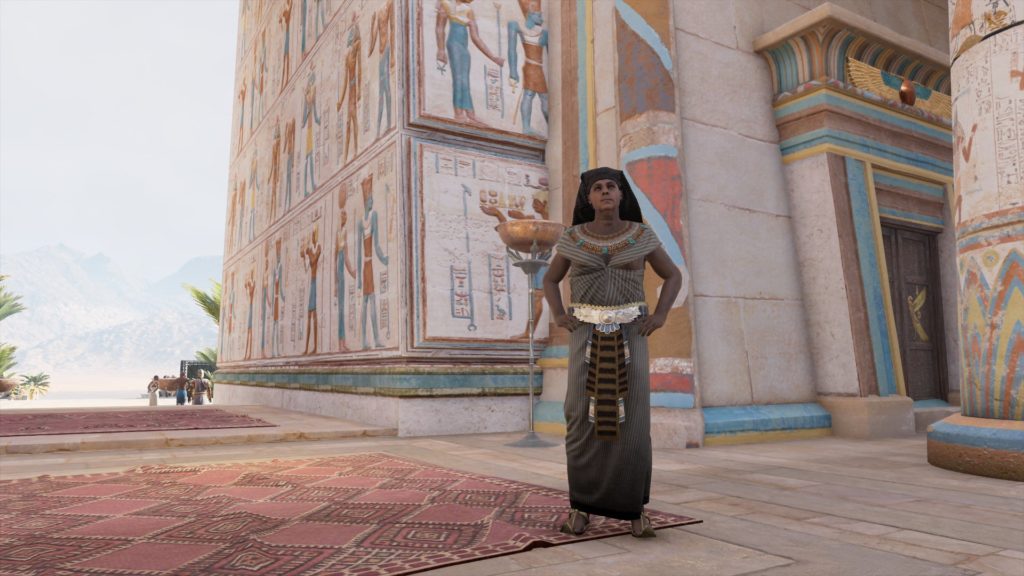
The end of the Ptolemaic period (49 – 43 BC) saw Egypt as a civilization that had already existed for years, supporting a rich and varied culture that included a well-established Greek presence. Within this setting, the main game story follows Bayek of Siwa, a member of the legendary Medjay, and his wife Aya as they explore the decades-long feud between the Hidden Ones, forerunners to the Assassin Brotherhood and the Order of the Ancients, the predecessors of the Templar Order. The Medjay, Assassin Brotherhood and Templar Order all sound like fictional secret organisations created for the game but were in fact quite historically real religious or military sects.
Follow me to…ancient Egypt
The devil as they say, is in the details…and my, oh my, is the game filled with those. From plants to wandering animals, burial treasures found in pyramids, and even conversations going on in the background of a quest, each minor detail has been developed with obvious care. This is not a unique feature in expansive open-world games like AC; detailed elements down to wrinkles on faces are often lauded as part of the appeal of games like this. However, based on the fact that these in-game personas and background characters have been developed by researchers and experts in the field of history and Egyptian culture does redeem (to an extent) the fact that, barring the Discovery Tour, everything else story-related in the game is a highly fictionalized rendition of life in ancient Egypt – meaning it’s still exciting to explore, but should be taken with a grain of salt (sand?!). Assassin’s Creed if used as a learning tool should perhaps be seen as a crutch, a support for furthering your interest in learning about life in ancient Egypt in a fun and interactive way. Compared to the game-play and storyline, the Discovery Tour is an integrated, but totally separate playing mode functioning as an factual, educative tour of ancient Egypt. Doing away with the blood thirsty violence, neck-stabbing and looting associated with Assassin’s Creed games, the Tour enables the player to explore different cities and histories of the Egyptian civilization. You can choose from a variety of different avatars to use during your exploration, including Cleopatra or even Julius Caesar if that tickles your fancy. The Tour offers the same visual imagery and movements as the actual Origins game-play, but removes combat, experience levels and other elements essential for the campaign storyline, which I felt was quite important for the expected learning environment.
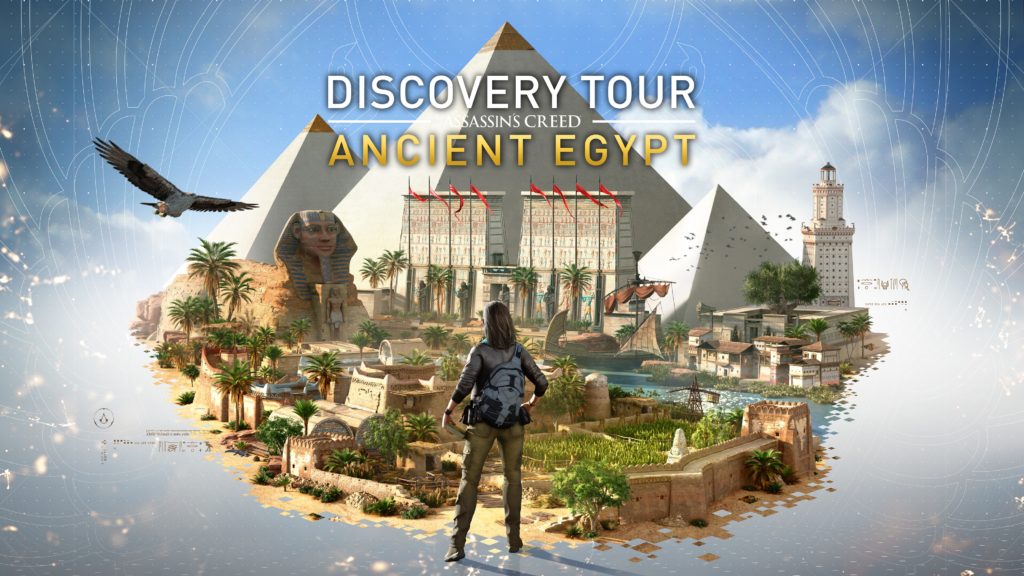
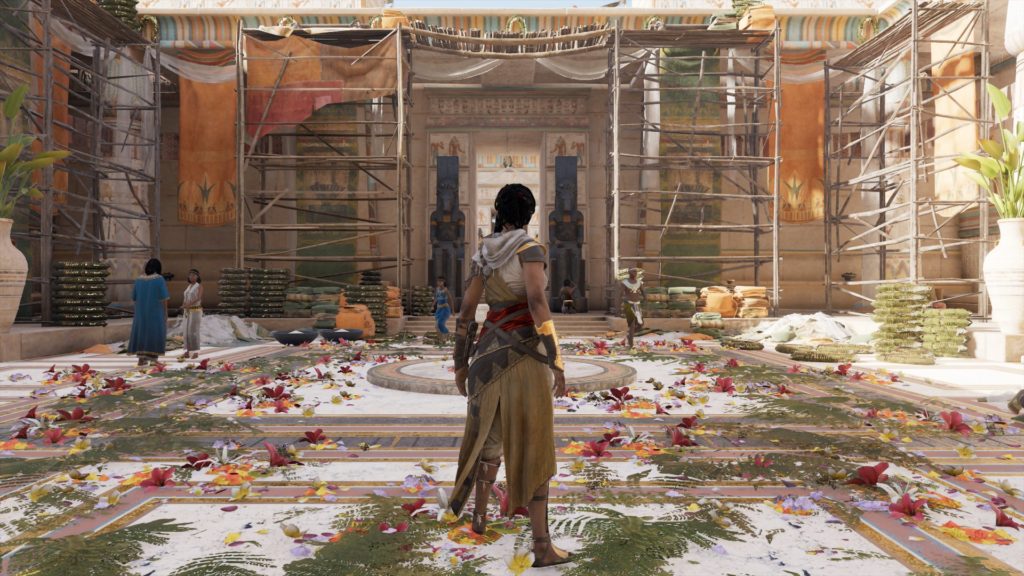
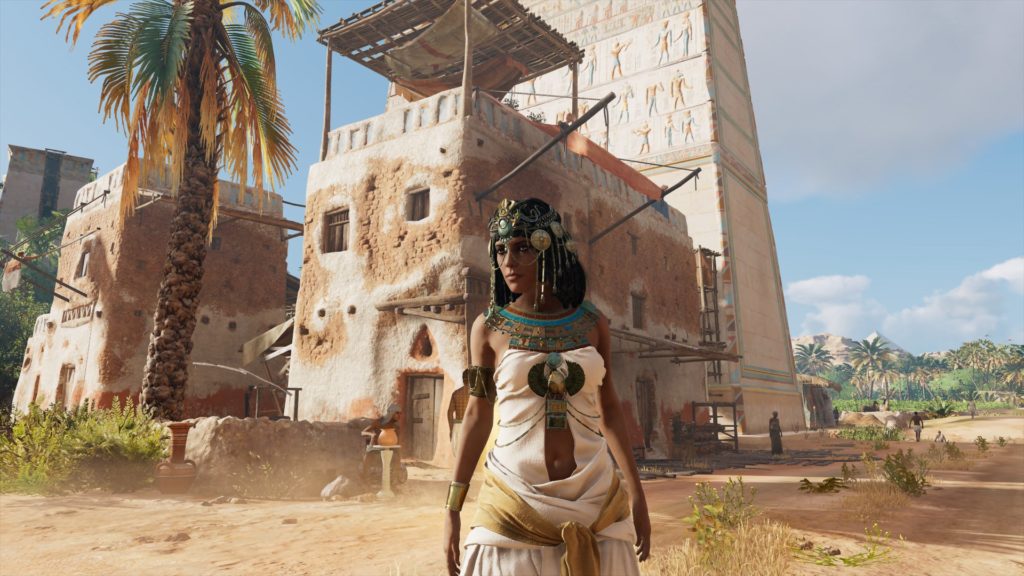
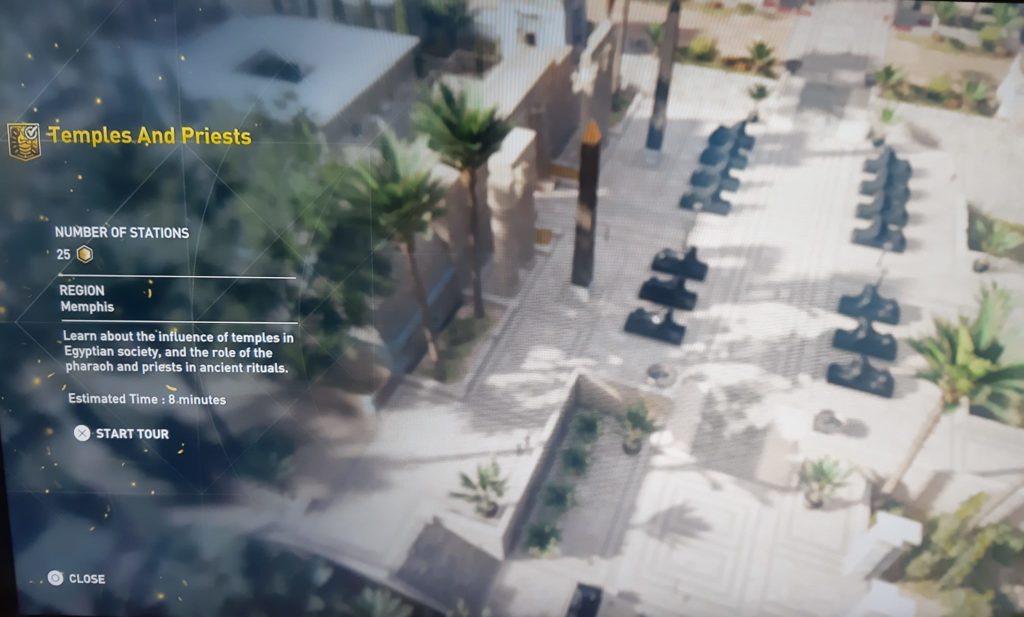
The Tour opens up with the story of Alexandria and once completed, unlocks 75 tours covering a huge range of topics on ancient Egypt; including mummification, temples, the Great Pyramids, and artisans of Memphis. If you think the game play world was extensive…you have another think coming! For a history buff like me, the Discovery Tour was a bigger attraction than the actual game storyline, because of the huge amount of simple, factual and interesting history that’s on offer. Each tour has a number of stations that provide relevant information on the topic chosen, but you are not bound to explore just that route; with my chosen avatar I was able to break course, scale the Great Pyramid of Khufu, climb to the top of the temples at Memphis, and watch a prayer ceremony in the marketplace. Combined with the facts displayed at every station, the Tour makes for a stunning and informative journey through ancient Egypt. It lined up perfectly with my own knowledge of Egypt – both from studying about it in school and spending a brief semester in Cairo – reinforcing known facts and introducing several new bits of informa
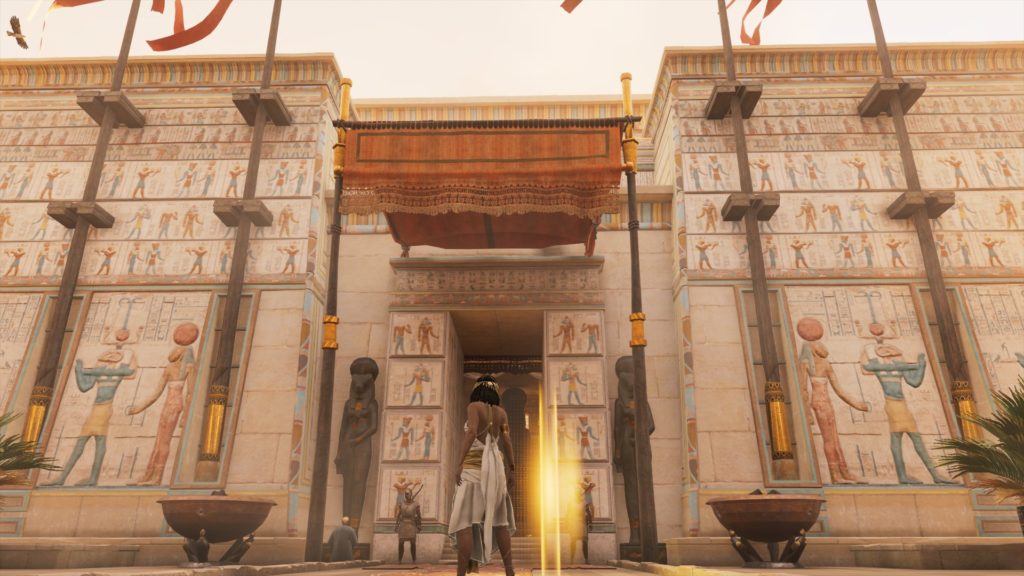
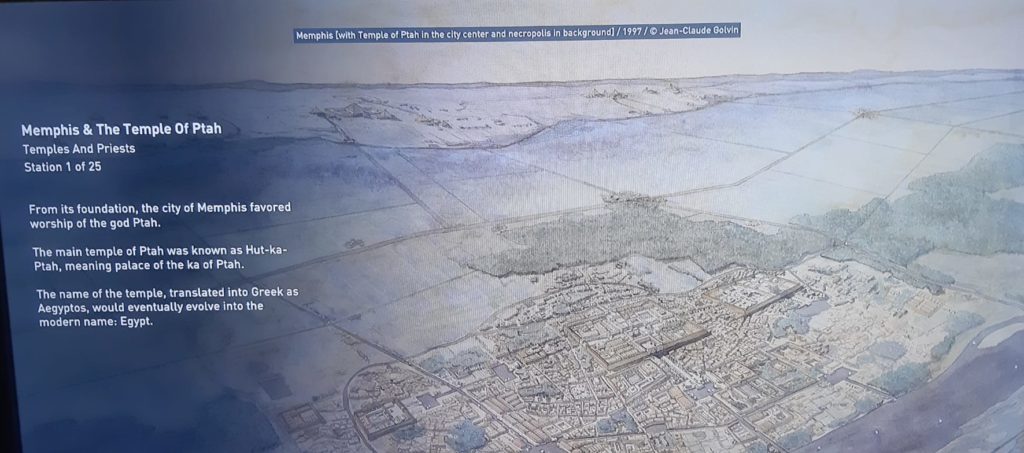
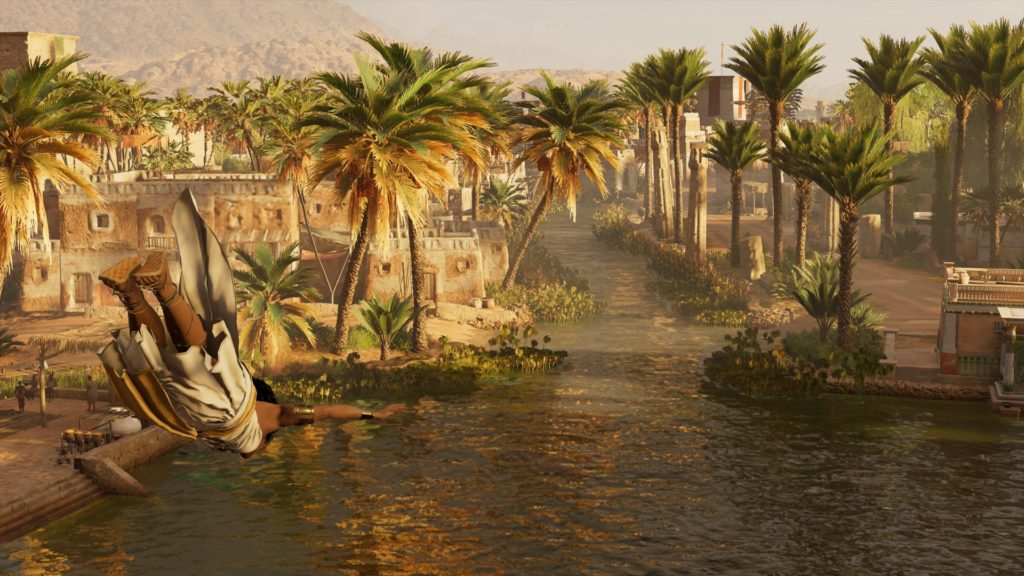
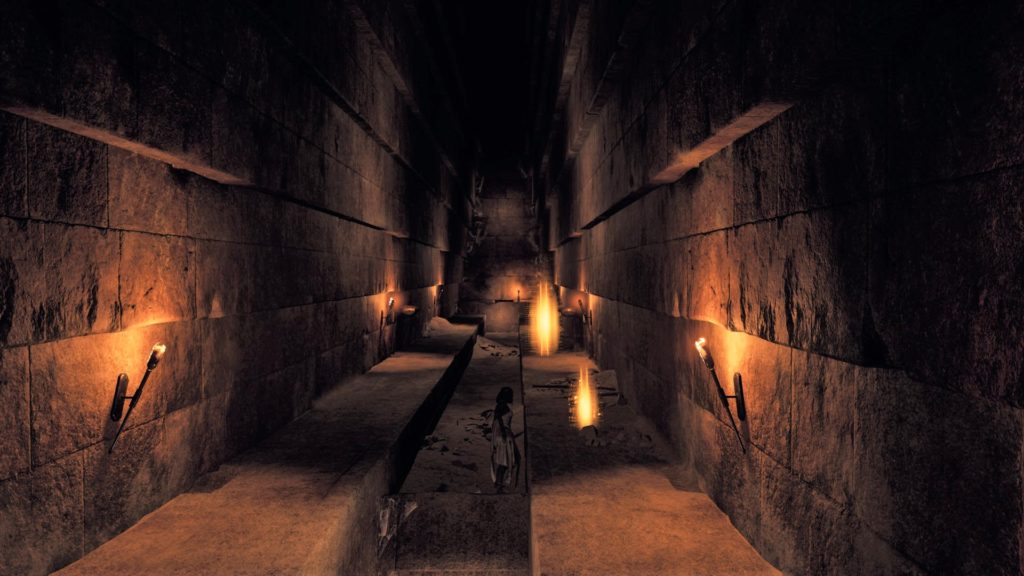
The Tour in this sense acts as a motivator, encouraging the player to deep dive in the proverbial Nile waters of ancient Egyptian culture. It also makes ancient Egypt accessible in a way perhaps previously unseen – first person virtual discovery of a huge civilization that today is reflected in ruins. As an added bonus you can explore the region with an avatar of your choice as mentioned earlier; it gives the Tour a little kick and a giggle to see stately Caesar wading through waist-deep river water, or to see a bejewelled Cleopatra scaling the walls of the Pyramids. And this, in fact, is the core attraction of the Discovery Tour – and by extension the actual game play of Assassin’s Creed: Origins – the fact that one is able to explore life, community, trade and other parts of ancient Egypt in-depth, virtually “in-person” and up close provides an overall interesting and relatively educational journey. Again, the history as portrayed in the game story is what I assume a highly fictionalized representation of factual history, which again, makes sense for the sake of storytelling and imagery. However, the fiction is based on fact and visualized in a highly attractive, interactive and potentially educative manner – if one chooses to delve deeper.
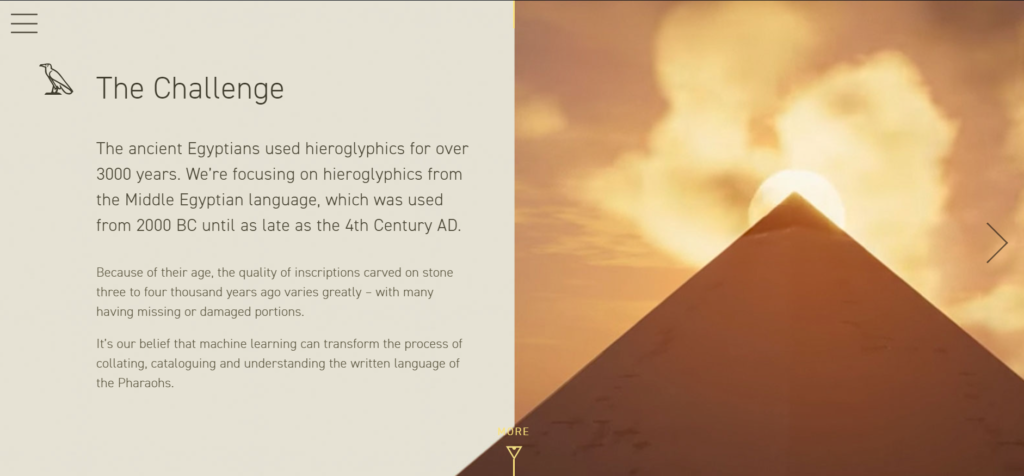
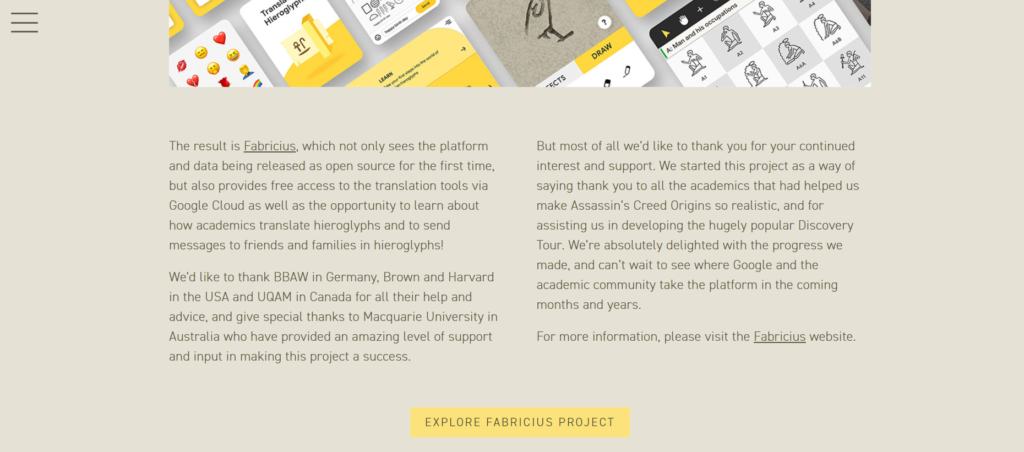
“The Hieroglyphics Initiative not only has the potential to save us time as Egyptologists, it could unlock the magic of hieroglyphics for a new audience”
Perrine Poiron, Egyptologist, Ph.D. student (Sorbonne/UQAM). Quoted in an article by Sam Bishop on Gamereactor.eu https://www.gamereactor.eu/ubisoft-launches-the-hieroglyphics-initiative/
Many researchers and fans did indeed delve deeper. As some fans of the game who were also familiar with hieroglyphs pointed out, the hieroglyphs that adorn most of the temple walls in the game play and Discovery Tour are in fact close to accurate, though do not necessarily make complete sentences when strung together. In fact, one archaeologist and fan of the games went so far as to try and decipher them. Spoiler alert: She did! Another research-centred programme that sparked from Origins was the Hieroglyphics Initiative which was jointly developed by Ubisoft and Google Arts & Culture at the British Museum in 2017. The project uses AI and machine learning to assign a specific line of code to each known hieroglyph, allowing researchers to decipher them at a much faster rate and also allowing for a rapid exchange of data between researchers and developers. The project was developed after the game was released, and the end result was the Fabricus project, another open-source data-sharing initiative that brought deciphered hieroglyphs and the deciphering processes to the public.
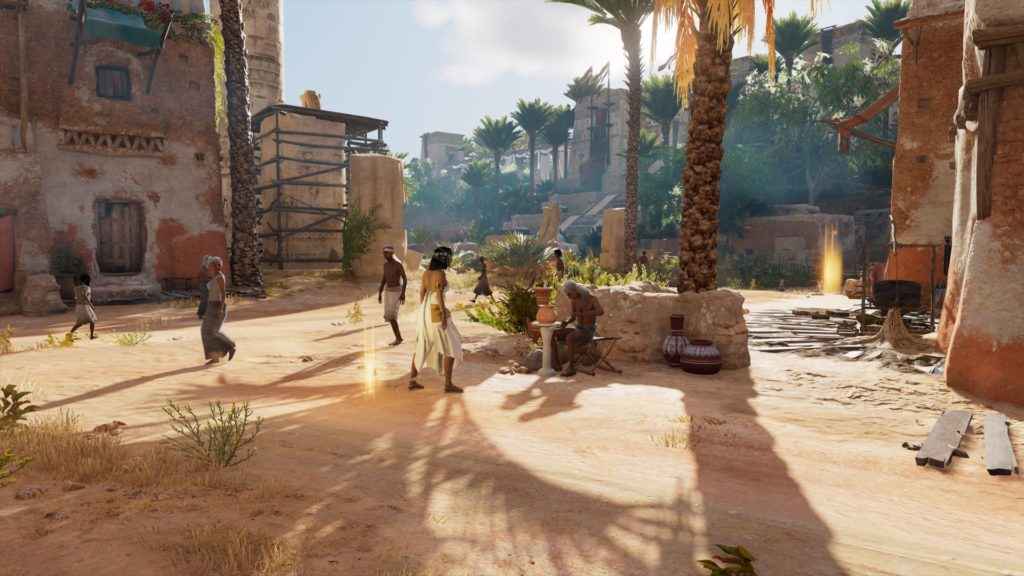
After having explored this genre of cultural learning in depth, I think we can conclude that in cases like those mentioned above and undoubtedly others, Assassin’s Creed: Origins has directly or indirectly influenced, stimulated or encouraged further exploration in some form or another of ancient Egypt and it’s people. It was the in-depth information that really made a difference in my own experience with the game and Discovery Tour that we now know was created by a team of historians and kept as close to fact as possible. Personally speaking, learning about how the artisans created their pieces and traded them was a topic I found incredibly interesting, having never learnt about it from such an inside perspective. On the other hand, if we think about it from the perspective of someone with little to no information about ancient Egypt beyond the predictable, a tour like this one could open up so many new avenues of research, personal or academic, that stimulates cultural or history learning on different levels.
It’s back to the Animus for me now, onward to explore some more!
XXXXXXXXXXXXXXXXX